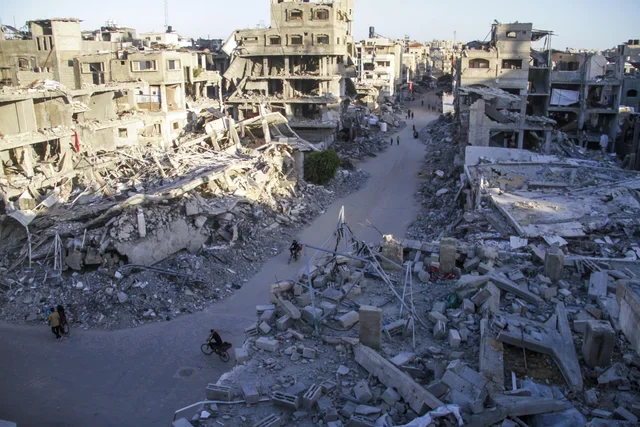Devastating Israeli airstrikes have rocked Gaza, claiming over 92 Palestinian lives on May 17, 2025, alone, as part of a sharp escalation in violence over a 36 to 48-hour period.
The intensity of these strikes has surged, with more than 130 Palestinians killed in just hours across multiple locations.
The ferocity of Israeli airstrikes in Gaza has intensified, with over 130 Palestinians killed in mere hours across numerous locations.
Gaza City, Khan Younis, and the Jabalia refugee camp have borne the brunt of the attacks, as the Israeli military ramps up operations.
Within this short timeframe, estimates suggest over 200 deaths and around 300,000 people displaced, forced to flee their homes amid relentless bombardments.
The geographic spread of the strikes is vast, hitting both northern and southern areas of Gaza.
In Khan Younis, a hospital and nearby areas were struck, resulting in at least 28 deaths.
Residential zones like Hamad City, Abasan al-Kabira, and Tel al-Zaatar neighborhood saw towers and houses destroyed.
A humanitarian aid warehouse in Deir al-Balah was also hit, killing at least 10, including infants, worsening the already dire situation for civilians.
Strikes on civilian gatherings in central and southern Gaza have added to the mounting casualties, with reports of bodies scattered in hospital compounds, complicating recovery efforts.
Civilian tolls are staggering, as the Gaza Health Ministry confirms at least 400 Palestinians, including women and children, have been killed since ceasefire talks stalled.
Over 500 others are injured, overwhelming medical staff who struggle to cope with the influx of wounded.
Families, siblings, and infants have perished in homes and public spaces, caught in the crossfire of this conflict.
Hospitals, already under strain, face additional challenges due to direct strikes on medical facilities, hampering emergency responses while bombardments continue unabated.
Infrastructure damage paints a grim picture of Gaza’s plight.
Around 1,000 housing units in northern Gaza have been destroyed or damaged, contributing to the massive displacement of 300,000 people toward Gaza City.
Humanitarian aid facilities and warehouses, critical for civilian survival, have been targeted, limiting access to essentials.
Additionally, emergency teams are being denied access to affected areas, violating international law, exacerbating the challenges of rescuing those trapped under rubble.
The destruction of medical centers and ongoing strikes deepen the humanitarian crisis, with safe zones becoming overcrowded as people seek refuge wherever they can.
The Israeli Defense Forces (IDF) state that these airstrikes aim to target Hamas terrorists, weapons stockpiles, and military infrastructure used to attack Israeli civilians and soldiers.
They’ve reported attempts to neutralize terror cells and launch posts, including an unconfirmed strike on Hamas leader Mohammed Sinwar during a hospital attack.
Evacuation orders for neighborhoods near the border hint at a possible ground invasion, while Israel links the strikes to Hamas’s refusal to release hostages.
The frequency of airstrikes has reached unprecedented levels, with reports indicating one strike occurring every four minutes across the Gaza Strip every four minutes.
As violence persists, Gaza’s civilians remain trapped in a cycle of loss and displacement, with no immediate end to the conflict in sight.

